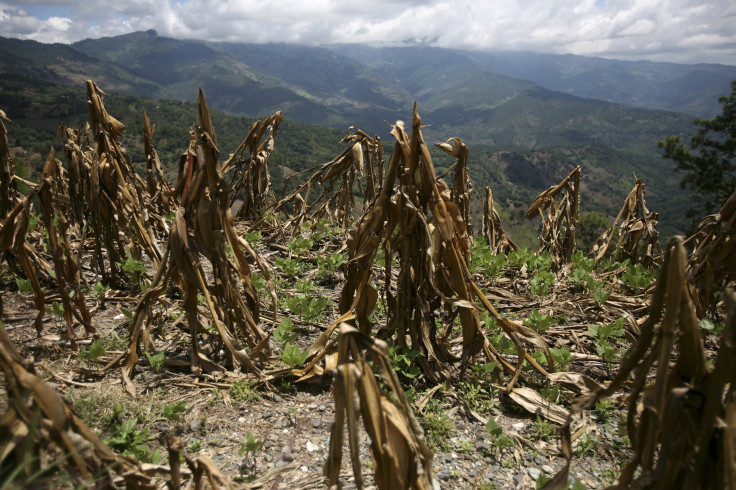Do Extreme Weather Images Affect Climate Change Effort? Photos Make Viewers Apathetic, Report Says

Floods. Heat waves. Droughts. Images of extreme weather are ubiquitous in modern media and seem to depict an entropic Earth hurdling towards an apocalyptic end. But new research into the effects these images have on viewers’ minds suggests such stirring depictions might actually generate apathy and hinder climate change action.
A recent study, published in Oct. 2013 in the journal Science as Culture, found that images of small towns inundated by floodwaters, scorched crop fields and shrinking ice might not convey the emotional toll extreme weather has on communities as effectively as media editors might think. The images, researchers argue, are often visual clichés that only serve to make their viewers yawn or turn away.
"We concluded that you couldn't use these images to engage people on the issue of climate change because they mostly are of helplessness," Brigitte Nerlich, a social science professor at the University of Nottingham and co-author of the study, told E&E News. "They didn't show humans being in control of doing anything. They were mostly absent from the landscape of the images."
Nerlich and her team looked at 118 images published in various news articles in 2011 following the release of the Intergovernmental Panel on Climate Change’s special report. The images included depictions of floods, hurricanes, heat waves and melting ice.
Nerlich argues that viewers are too far removed from the scenes in the images to really care about the plight of the region they depict. The pictures create and “us and them” mentality, she wrote – the scenes are geographically distant from our own and therefore there’s nothing we can do to fix it.
Furthermore, oftentimes the people in the images are pictured as getting along anyways, despite having their way of life disrupted by extreme natural disaster. This, Nerlich maintains, makes extreme weather seem mundane – something that happens all the time, all over the place, and there’s nothing we can do about it but pick up and move forward.
"While visual representations of extreme weather in developing countries tend to depict the resilience of groups of individuals getting on with their lives in the face of extreme weather, images in the industrialized world tend to focus upon the aftermath of extreme weather and human suffering induced by extreme weather events," researchers noted in the paper.
Nerlich said these images often paint flooding and disaster as just part of the way of life in these “faraway” places. “There is no indication of victimhood or desperation, but rather a mundane sense of routine,” the authors noted.
Researchers continued:
Accordingly, these images do not convey the emotion of compassion, since the protagonists in the images are not portrayed as victims and they are distanced from the viewer. Crucially, flooding does not seem to be presented in terms of extreme weather for the individuals depicted, many of whom even seem to express happiness through their smiles. Moreover, the representation of individuals continuing with life, rather than ‘fighting for’ their lives, essentially distances them from the category of victims of disaster and calamity.
Researchers say that even images that hit a little closer to home – for example, an American woman surrounded by muddy water after flooding – only serves to make viewers feel helpless. They argue that seeing these images makes us feel vulnerable, hopeless and even guilty, emotions which actually undermine the effort to curb climate change.
“The images discussed here are images documenting real extreme weather events, such as floods in Pakistan or droughts in Texas,” the study noted. “However, they are also symbols that express certain socially relevant emotions and tell a social story about weather, climate and human reactions to extreme events. Although some images can be seen as symbols of resilience in one context, far away from the reader of the image, they switch to symbols of vulnerability for the reader of Western newspapers in which they are used.”
At the same time, research shows that Americans are more eager than ever to campaign for climate change mitigation. According to a new report from the Yale Project on Climate Change, three in 10 Americans are willing to join a campaign to urge elected officials to take action against climate change. Forty percent of Americans have joined or would join a campaign to convince elected officials to pursue renewable energy sources and enact laws to increase energy efficiencies.
And recently, climate change has reemerged in public discourse as a prominent talking point in both politics and everyday conversation. The Obama administration has increasingly made climate change a key issue to tackle, while blizzards in the East and drought in the West have renewed discussions of the effects of climate change on weather patterns.
Then there’s U.S. Secretary of State John Kerry’s recent comments about climate change he made during a trip to China and Indonesia. Kerry referred to climate change as another “weapon of mass destruction” and said anyone still arguing against climate change is “simply burying their heads in the sand.”
© Copyright IBTimes 2025. All rights reserved.






















